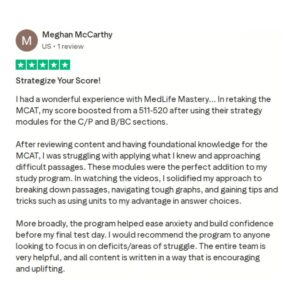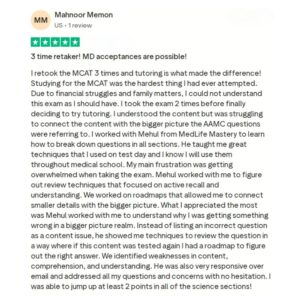Undecided between the MCAT and DAT? We understand the weight of choosing your career path. Let us ease your uncertainty – contacting us directly is the simplest way to make this decision. Reach out, and let's navigate this together!
The MCAT and DAT are two different medical standardized tests widely used by various educational institutions, especially medical and dental schools.
If you are unsure on the difference between the MCAT and DAT, we will help you clear the confusion between these two exams.
If you are planning to pursue any medical-related profession, such as becoming a surgeon or physician, then MCAT is the test that best suits your career path.
If ever you want to focus more on dentistry, the DAT is the perfect exam for you. Most students who are still in their undergraduate programs do not know the difference between these two exams.
Below we will guide you through the differences and similarities between the MCAT and DAT.
What is the MCAT?
MCAT stands for Medical College Admission Test, a standardized exam taken by those students who want to enroll in medical schools. And all of its test-question are in multiple-choice form, and it is taken using a computer.
The test’s primary purpose is to assess the knowledge of pre-medical students in Chemistry, Physics, Biology, Psychology, and Sociology. These basic sciences are usually encountered when taking any medical course.
Furthermore, the MCAT is internationally recognized and highly required in English-speaking countries, including Australia, Canada, the United States, and other Asian countries.
Most medical schools and other health profession schools in these countries use MCAT results as a basis for admission to their institutions. The MCAT is administered and created by the Association of American Medical Colleges or the AAMC intended for medical schools.
The MCAT allows the educational institution to assess and know if the student is ready to take higher medical courses. Also, the MCAT measures the student’s reasoning and critical analysis skills, which are also needed in medical school.
MCAT has four test sections containing around 50+ multiple-choice test questions focusing on the different branches of sciences.
Also, the average exam length is around 7 hours and 30 minutes.
MCAT Four Test Sections:
What is the DAT?
DAT stands for Dental Admission Test, a standardized multiple-choice exam intended for those students who want to enroll in dental school.
The DAT is a computerized exam created and administered by the American Dental Association (ADA).
Also, this standardized exam is designed to assess the student’s knowledge and skills in the following areas – general academic ability, perceptual ability, comprehension of scientific information, and perceptual ability.
It is also the top requirement for around 66 dental schools in the United States and 10 dental schools in Canada as a part of their admission process.
The DAT is recommended for students who have already taken up and completed pre-requisite biology, general chemistry, and organic chemistry courses. Moreover, this standardized exam should be taken a year before enrolling in any dental school.
DAT has four test sections:
Similarities Between MCAT and DAT
The MCAT and DAT are highly trusted and recognized standardized examinations by various medical and dental schools worldwide.
Also, both of these tests are computer-based, which is an efficient and easier way to take them. The MCAT and DAT have the same intention – to test the test-takers skills and knowledge of certain branches of science. In addition to getting a clearer view of the test taker’s abilities and skills related to the career they want to pursue.
These tests also prove the readiness of each test-taker, to determine if they are ready to take a higher medical degree of education.
Exam Format and Structure: MCAT vs. DAT
The MCAT and DAT are both standardized admission exams needed to be taken for you to proceed in the medical profession of your choice. Additionally, both these exams are computer-based, so you can easily take them without the hassle of using a pencil and paper.
However, they do not share the same exam format and structure.
The DAT has four test sections, the same as the MCAT. However, these test sections significantly differ in the topics covered and skills assessed.
The DAT contains four test sections that covering natural sciences, such as biology, general chemistry, and organic chemistry. It also includes a reading comprehension part involving dental and basic science topics.
Also, one of the DAT test sections covers quantitative reasoning, such as mathematical problems in algebra, numerical calculations, conversions, and more. And it also has a test section that deals with perceptual ability wherein you are given two and three-dimensional problem-solving.
The MCAT contains four test sections as well. However, the MCAT covers Biological and Biochemical Foundations, Chemical and Physical Foundations of Biological Systems, Psychological, Social, and Biological Foundations of Behaviour topics, including Critical Analysis and Reasoning Skills.
In terms of their exam length, the DAT is much shorter than the MCAT, with a time limit of approximately 5 hours and 15 minutes. In contrast, the MCAT takes about 7 hours and 30 minutes more for you to finish the whole test.
You can also take the DAT all year round as it has test schedules every month, whereas, the MCAT is only offered on 35 prescheduled test dates in a year from January to September.
The DAT may be offered all year round, however, an applicant can only write this exam 3 times within the 12 month period. If an applicant needed to take it more than the required frequency (3 times), you must get a special permit from the American Dental Association (ADA).Exam Format and Structure | MCAT | DAT |
|---|---|---|
Test Sections | -Biological and Biochemical Foundations -Chemical and Physical Foundations of Biological Systems -Psychological, Social, and Biological Foundations of Behavior -Critical Analysis and Reasoning Skills | -Natural Sciences -Reading Comprehension -Quantitative Reasoning -Perceptual Ability |
Test Duration | Duration per test section:
90 to 95 minutes each Overall: 7 hours and 33 minutes, including break times. | Duration per test section:
Natural Sciences (90 minutes) Spatial Ability (60 minutes) Reading Comprehension (60 minutes) Numerical Reasoning (45 minutes) Overall: 5 hours and 15 minutes |
Number of Test Questions | 230 multiple-choice test questions | 280 multiple-choice test questions |
Test Frequency | 35 testing dates annually from January to September. | Test schedules are available all-year-round |
Test Delivery | Computer-Based Test | Computer-Based Test |
Mode | Cell | Cell |
Scoring: MCAT vs. DAT
The DAT and MCAT significantly differ in terms of their scoring systems. For example, the DAT has raw scores which are the sum of your correct answers per test section.
However, these raw scores will not directly reflect on your DAT score report. Instead, these DAT raw scores will be converted to their corresponding scoring scale of 1 to 30 points. Your scaled scores will be your official DAT scores.
The MCAT scoring system ranges from 132 points, the highest possible score for each test section, to 118 points.
These MCAT scores also have equivalent percentile ranks. Your MCAT scores will be compared to the previous MCAT test-takers results, which make up percentile ranks from 2 to 3 years of accumulated test scores.
The percentile ranking of your MCAT results range from 100% to 1%. For your final MCAT results, you will have an overall score which is the sum of all the test section scores and this ranges from 472 to 528 points.MCAT Scoring | DAT Scoring |
|---|---|
Score Range Per Test Section: 118 to 132 | Scoring Scale: 1 to 30 points |
This is the MCAT Percentile Rank from May 1, 2021, to April 30, 2022. The table below shows the MCAT overall scores with their corresponding percentile ranks. You can use this as a guide to compare your MCAT results.
Overall MCAT Score | Percentile Rank | Overall MCAT Score | Percentile Rank | Header | Overall MCAT Score | Percentile Rank | |
|---|---|---|---|---|---|---|---|
472 | <1% | Cell | 491 | 19% | Cell | 510 | 78% |
473 | <1% | Cell | 492 | 21% | Cell | 511 | 81% |
474 | <1% | Cell | 493 | 24% | Cell | 512 | 84% |
475 | <1% | Cell | 494 | 27% | Cell | 513 | 86% |
476 | 1% | Cell | 495 | 29% | Cell | 514 | 88% |
477 | 1% | Cell | 496 | 32% | Cell | 515 | 90% |
478 | 1% | Cell | 497 | 35% | Cell | 516 | 92% |
479 | 2% | Cell | 498 | 38% | Cell | 517 | 94% |
480 | 3% | Cell | 499 | 42% | Cell | 518 | 95% |
481 | 4% | Cell | 500 | 45% | Cell | 519 | 96% |
482 | 4% | Cell | 501 | 48% | Cell | 520 | 97% |
483 | 6% | Cell | 502 | 53% | Cell | 521 | 98% |
484 | 7% | Cell | 503 | 55% | Cell | 522 | 99% |
485 | 8% | Cell | 504 | 58% | Cell | 523 | 99% |
486 | 9% | Cell | 505 | 62% | Cell | 524 | 100% |
487 | 11% | Cell | 506 | 65% | Cell | 525 | 100% |
488 | 13% | Cell | 507 | 69 | Cell | 526 | 100% |
4894 | 15% | Cell | 508 | 72% | Cell | 527 | 100% |
490 | 17% | Cell | 509 | 75% | Cell | 528 | 100% |
Test Requirements: MCAT vs. DAT
These two exams are similar in terms of their online registration process. However, the DAT and MCAT also have differences in some areas.
For example, in the DAT registration process, you need to obtain a DENTPIN through the official website of the ADA. It is used as a personal descriptor for all your dental testing needs.
The registration for the test is made online, and you must also present the necessary documents to prove your identification. Also, before taking the DAT, you must process an eligibility confirmation from the Department of Testing Services via email.
Additionally, the MCAT accepts a wide array of IDs in comparison to the DAT. The MCAT also requires additional documents such as academic transcripts from undergraduate courses you previously have taken.
MCAT Test Requirements | DAT Test Requirements |
|---|---|
For Online Application -Make an account on the AAMC website. -Fill out the application questions and prompts on their website. -Go to MCAT registration systems and follow the instructions given. Present the following upon registration: 1. Any government-issued IDs (must be valid and not expired) 2. ID must contain a clear photo of you. 3.ID must be in English.
4. Accepted IDs include: -Driver’s license -Passport -Permanent Resident Card (Green Card) -Employment Authorization Document -Canada Health Car (For Ontario and British Columbia only) -Consular ID -Canadian Aviation Card
5. Submit your academic transcripts (applicable for high school, undergraduate, and any post-graduate education). Also, it accepts unofficial transcripts but must reflect your full name.
| For Online Application -Acquire your DENTPIN on their official website. -Log in to the ADA website using your DENTPIN. -Complete their registration process. Present the following upon registration: 1. Must present any government-issued ID upon registration 2. ID must reflect a clear picture of you. 3. ID must contain your signature. 4. Accepted IDs include: -Driver’s license -Passport
-Social Security Card 5. Must present Eligibility Confirmation from ADA. *Note: All IDs presented must reflect your full name that matches the name you have in your application. |
Exam Costs: MCAT vs. DAT
The MCAT and DAT accept credit and debit cards as their mode of payment, which is much more efficient since their registration is online. However, they differ in their exam costs.
For instance, the DAT fee is USD 495, whereas the MCAT costs only USD 310, which is much cheaper than the other exam.
MCAT Fee | DAT Fee | |
|---|---|---|
Payment Modes | Only accepts credit or debit cards (American Express, VISA, MasterCard) | Accepts credit or debit cards only |
Exam Cost | USD 310 | USD 495 |
Test Recognition: MCAT vs. DAT
The MCAT is considered the best-standardized admission exam for any medical school worldwide. The MCAT provides an efficient and accurate assessment of the skills and knowledge of its test-takers needed for them to qualify for these medical institutions.
Also, it helps medical schools assess the candidate’s knowledge and if it meets their specific standards for admission. The MCAT is trusted by prominent medical schools in the USA, Canada, Europe, and other parts of Asia.
On the contrary, the DAT is recognized by most dental schools in the USA and Canada. The main purpose of the DAT is to assess the specific skills, abilities, and knowledge of candidates which is needed when studying proper dental medicine courses.
Here is a list of the medical schools worldwide that accept the MCAT:
Here is a list of the dental schools in the United States and Canada that accept the DAT:
Which is Easier: MCAT vs. DAT
Most test-takers find the DAT is much easier compared to the MCAT. It only takes around 5 hours to finish the test compared to the MCAT, which takes over 7 hours.
Also, the contents and test questions of the DAT are less complicated than the MCAT, which covers specific technical aspects of the different branches of science.
Moreover, the MCAT is found to be tricky by most of its test-takers because of how they present and construct their test questions. That is why it is advisable to conduct a proper and in-depth test to achieve higher scores.
In comparison, the DAT test questions are also difficult in some areas, but have an easy to medium range of difficulty. Additionally, the DAT does not have a passing or failing score. Instead, they use an average score of 17 as a basis, which specifically means that you did well on the test.
Should You Take the MCAT or the DAT?
The choice solely depends on what career you want to pursue. The MCAT and DAT significantly differ in their purpose. If you prefer to enroll and continue a medical course, then the MCAT is the best choice for you. However, if you wish to enroll in dentistry, then the DAT is the best choice for you.
Your MCAT scores are also one of the factors that most medical schools look into to know if you will have an outstanding performance in medical courses.
The admission process for medical schools does not solely focus on your MCAT scores, but on the totality of your performance during the process.
However, the DAT test scores are a strong indicator of your potential in dental education programs offered in dental school.
Summary Table of Differences: MCAT vs. DAT
Below is the table of differences between the MCAT and DAT.
MCAT | DAT | |
|---|---|---|
Test Sections | -Biological and Biochemical Foundations -Chemical and Physical Foundations of Biological Systems -Psychological, Social, and Biological Foundations of Behavior -Critical Analysis and Reasoning Skills | -Natural Sciences -Reading Comprehension -Quantitative Reasoning -Perceptual Ability |
Test Duration | 7 hours and 33 minutes, including break times. | Duration per test section: Natural Sciences (90 minutes) Spatial Ability (60 minutes) Reading Comprehension (60 minutes) Numerical Reasoning (45 minutes) Overall: 5 hours and 15 minutes |
Number of Test Questions | 230 multiple-choice test questions | 280 multiple-choice test questions |
Test Frequency | 35 testing dates from January to September. | Offered all year-round |
Exam Cost | USD 310 | USD 495 |
Mode of Payment | Only accepts credit or debit cards (American Express, VISA, MasterCard) | Accepts credit and debit cards. |
Scoring System | Score Range Per Test Section: 118 to 132 Overall Score Range: 472 to 528 with percentile ranks | Scoring Scale: 1 to 30 points |
Additional FAQs – MCAT vs. DAT
Is the MCAT Harder than the DAT?
Also, it mainly focuses more on analysis, and the test questions are very complex and need in-depth understanding to do well in the test.
While the DAT is challenging in its test structure and contents, it is more manageable than MCAT. Also, the DAT is shorter in terms of its duration than the MCAT; thus, it does not put too much pressure on its test-takers.
Do Dental Schools Accept MCAT?
The DAT is also one of the deciding factors for the candidate to be admitted to any dental school. It helps the institution know if the candidate possesses the fundamental skills and knowledge needed to succeed in dental school.


 To help you achieve your goal MCAT score, we take turns hosting these
To help you achieve your goal MCAT score, we take turns hosting these 















